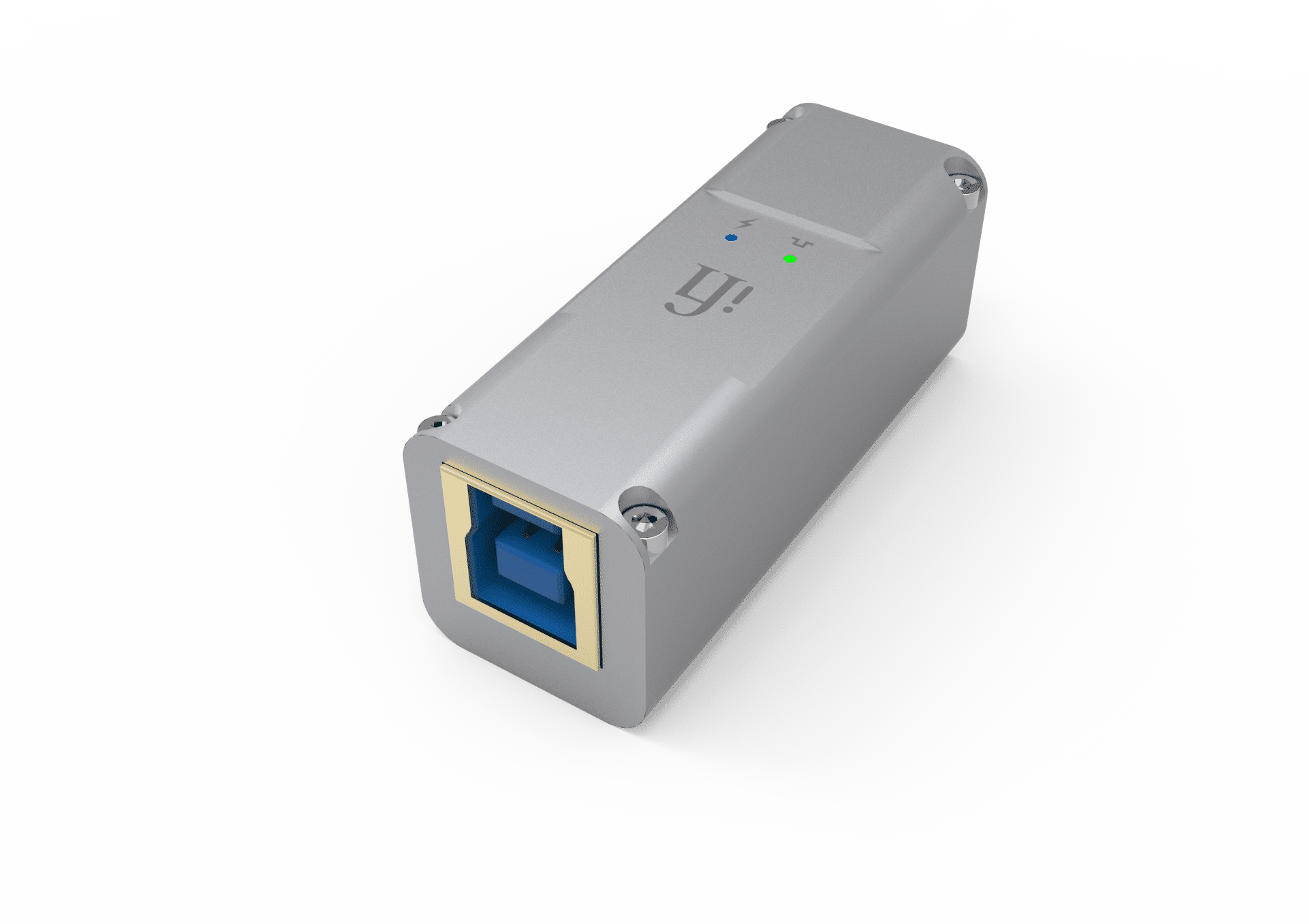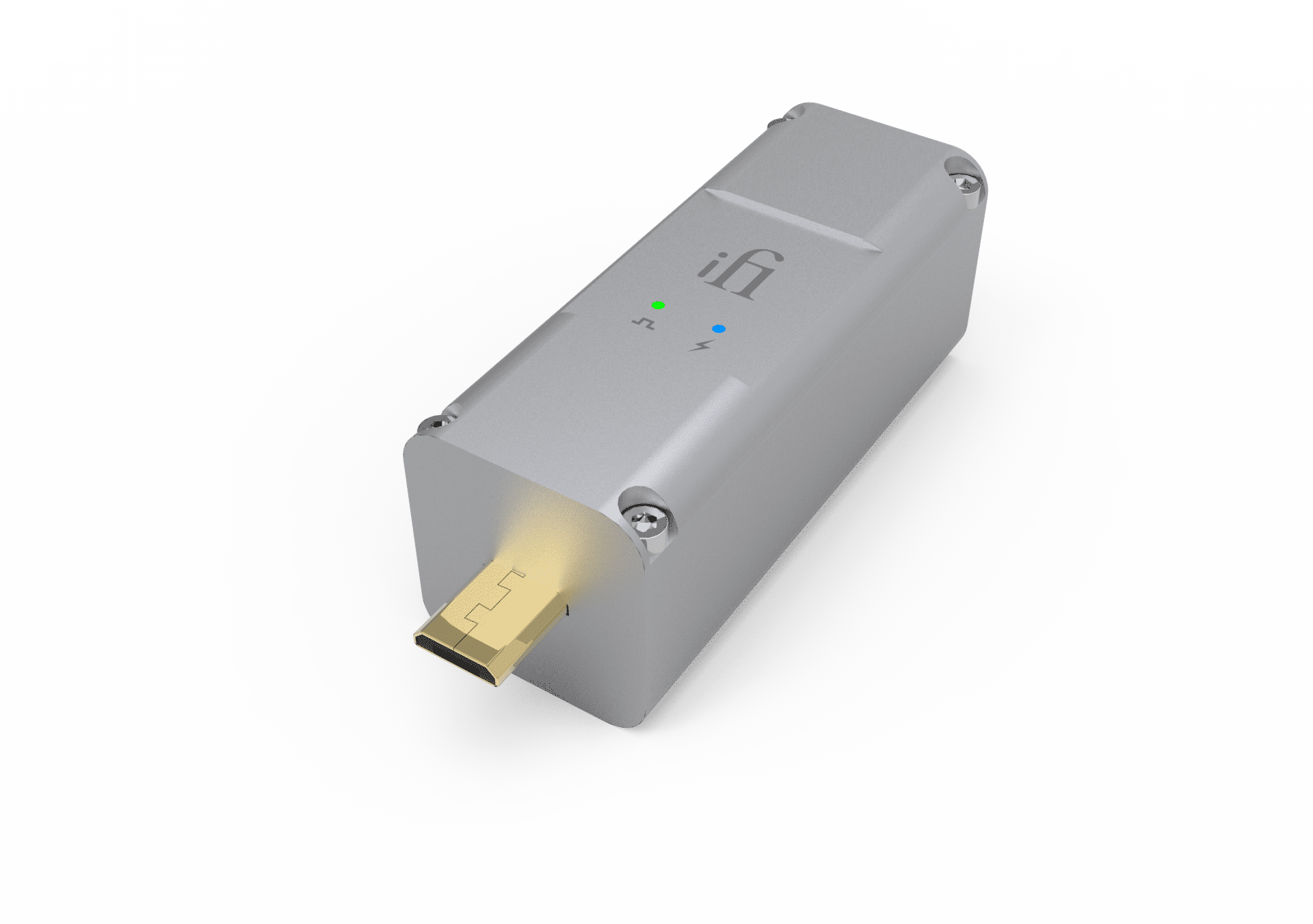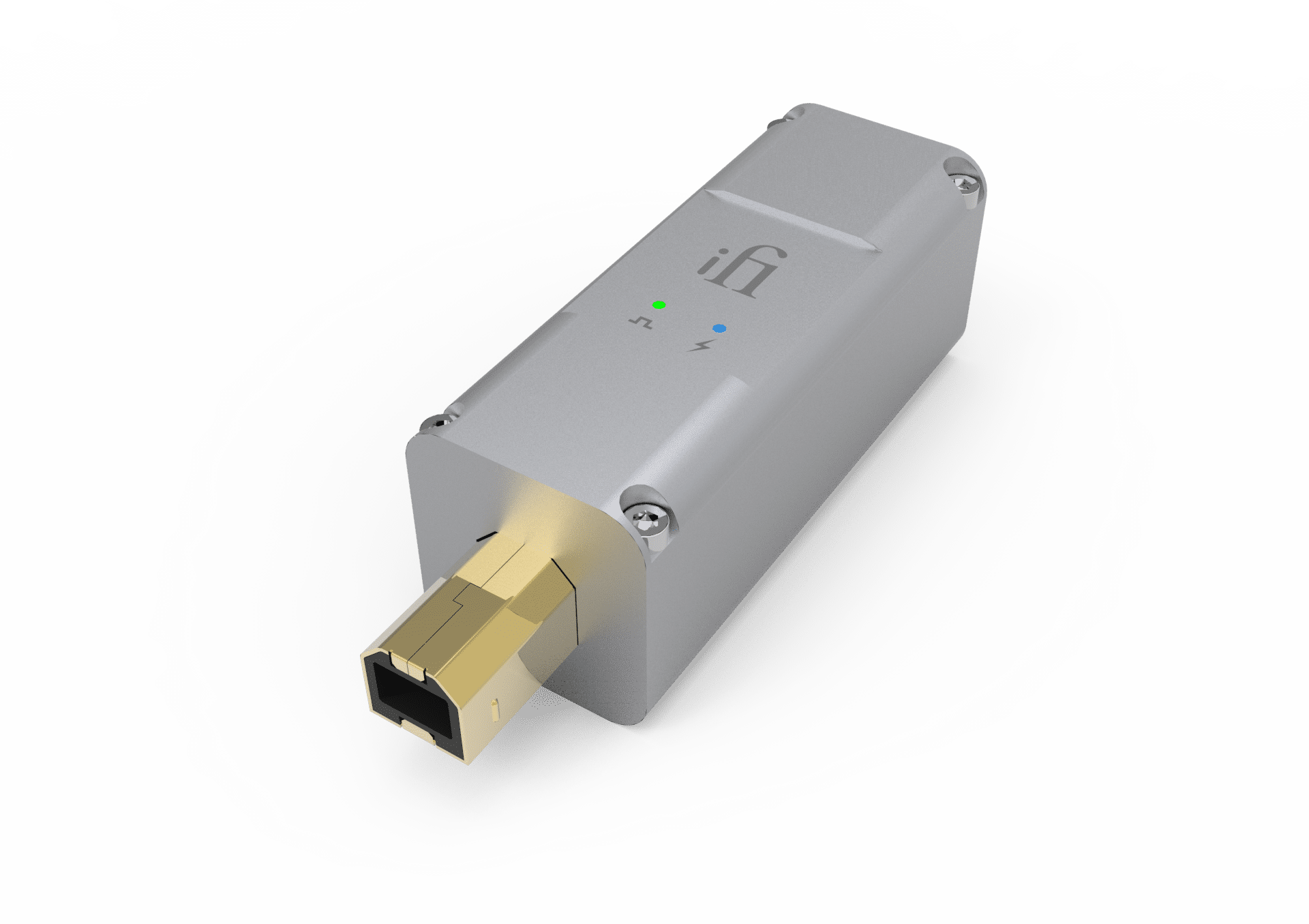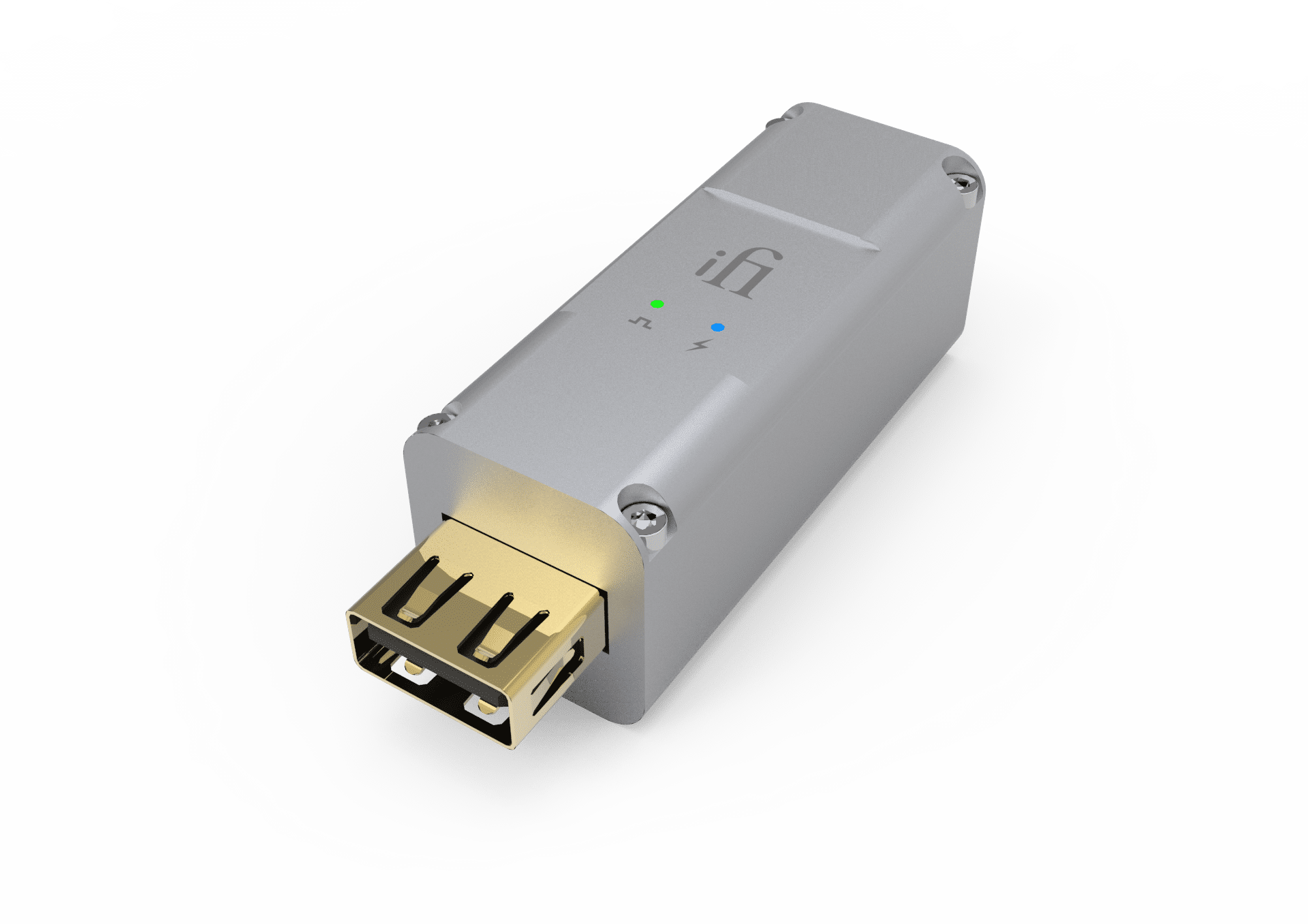The Article
iFi iPurifier2: Removing the rubbish, so that you can hear
26th November 2016

Noise, noise, noise…the bane of any audiophile’s life. Remove it and you can really hear what’s going on. Paul Rigby wants to do that which is why he’s reviewing iFi’s iPurifier2
Very loud music. That is, music that hurts your ears. It isn’t always that way because the volume is too high. Loud music that causes you to wince and demands that you knock the volume knob down a touch isn’t always that way because of the music itself. Often, it’s down to noise which attaches itself to the music and distorts and its that distortion that does the damage. The music is a sort of body, a carrier that the noise sticks to like a barnacle on the hull of a ship.
Slightly confusingly, this form of noise is not readily ‘visible’ to the ear. It’s not like a pneumatic drill or a siren or a baby crying. This ‘noise’ is actually more like a curtain of sonic rubbish. It smothers sound. It veils music. It reduces clarity. It stops the silence in the rear of the music from giving your dynamic a clear base to spring from.
In aural terms, the noise comes from all over the place. It can derive from the mains which is inherently a noisy place, it can come from the environment in terms of mobile phones and Wi-Fi signals, it can come from the source itself such as mechanical or (in the case of a computer source) from electrically processed noise and so on. This distortive rubbish is not pleasant to listen to and means that much of your music is often concealed by a blanket of this stuff. Remove it and you hear more music. You, in fact, get to hear what your sound system really sounds like.
This new gizmo from iFi is designed to reduce noise from the USB port of your computer. Computers are horribly noisy products. Mainly because they are not geared to audio output (although they can obviously perform that task) and also because, while they are pushing music out to you, they are also being, well, computers and performing house-keeping tasks…which also produces noise.
This little block from iFi is fitted within an aircraft-grade CNC-aluminium shell anodised in titanium, featuring a host of keyword feature names such as: Active Noise Cancellation, REclock, REgenerate plus REbalance. Let’s go through them.
Taking technology directly from the Thales Spectra radar cancellation system deployed in the French Dassault Rafale jet fighter, iFi transferred it to its own Active Noise Cancellation.
How? According to the company, “An air defence radar is transmitting at a certain frequency; the signal is bouncing off the aircraft; a receiver on board the aircraft picks up the signal and a computer analyses its base frequency/modulations and an identical, out-of-phase signal is generated by an on board system to cancel out the enemy radar signal. By generating a signal identical to the noise signal but in the exact opposite phase, it actively cancels all the incoming noise. ANC is the perfect ‘antidote’ for power supply noise, the bane of USB audio.”
REclock is a ‘3-in-1’ feature that re-clocks/REgenerates/repeats USB audio datastream. The original iPurifier featured REbalance which has been carried over to the iPurifier 2. It removes the DC offset and ‘re-balances’ the USB audio signal.
For a USB 3.0 and 2.0 compatible input port and USB2.0 output port, the unit spans 62 x 19 x 18mm and weighs just 30g.
IN USE
Part of the potential problem with the iPurifier2 is that, to get it up and running, you need to place a host of extra wiring in between you and the source which should, by rights, lower the sound quality by default. I know that adding a basic headphone cable adaptor that changes the termination plug from 6.35mm to 3.5mm reduces sound quality and that is just one metal connector. What you’re looking at here is an additional cable from the laptop to the iPurifier2, the iPurifier2 itself and a convertor block to enable me to plug the right cable into the reference Mojo head amp. That’s three extra sonic barriers, in theory. If I can put it in those terms. After all of that, I would want sonic improvements to be significant to warrant the potential barrier problem, never mind the extra inconvenience in terms of lugging all of this stuff around in a bag and have your desk at Starbucks/Neros/Costa table spilling with wiring and plugs. Of course, this perceived issue might just be that. Let’s see.
SOUND QUALITY
To begin the sound tests, I plugged the unit between my SSD-powered MacBook Pro and a Chord Mojo and, initially at least, plugged in a basic set of Sennheiser PX 100 headphones. The latter are typical headphones for use during a mobile experience. Small and foldaway, they also offer tremendous sound quality for minimal cost. I wondered if the iPurifier2 would help headphones so low in cost, though. Firing up Audirvana Plus I played the well produced and dynamic track, Skunk Anansie’s Hedonism as a 16bit/44.1kHz WAV.
From the first few notes I could hear a change. But before I took note of any specific sound quality changes the principle urge was to higher the gain to find the same volume that I had before. The music was a lot quieter now. What was going on? A lack of noise, principally. The iPurifier2 promises to remove noise and that, from the off, is what I could hear. With a bunch of noise removed, the music itself settled down to do its stuff but now I had to increase that gain to hear it. Once done, I took note of the sonic results.
First up was the increase in air and space around the introductory guitar which meant that the plucking of the strings added extra reverb tails, giving the soundstage an extra dimension. Secondly, the bass guitar sounded tighter and more characterful, each bass note had a greater form. Next up (you can see that there’s a fair old list of improvements here, can’t you?) was the vocals. What struck me most here was, yes, the greater sense of emotion and precision during the delivery but, most of all, the extra information to be found within the double tracked element of the vocal. Now I could better hear how that double tracking was put together. Again, the blacker silences now ‘heard’ in the back of the soundstage enabled more reverb to hang off the lead vocal too. It follows that the treble-infused cymbals and tambourine, secondary percussion, had a brassier and more metallic response. And all this from a basic pair of PX 100s?
I turned to hi-res jazz music and Sonny Rollins’ St Thomas at 24bit/96kHz but changed my headphones to superior Sennheiser HD650s. Again, I had to increase the gain when attaching the iPurifier2 to the reference system and again, the background silence was more noticeable. From that silence came a much more vibrant percussion which now had a far greater spectrum of tones and nuances in terms of the drums and cymbals struck and how hard they were struck. There was a heap of new information available now. Rollins’ own sax playing was smoother and more, well, reedy, I suppose. I got more of a sense of a human blowing through this instrument. More than that the piano – a largely subdued instrument before the addition of the iPurifier2 – now had a more significant rhythm-like role in the mix while the bass also emerged, becoming more characterful instead of just being a background tone.
CONCLUSION
In effect, this is a long review of what, essentially, is a very simple process: to remove or lower noise from your music. The iFi iPurifier2 does that and does it well, reducing the sonic rubbish to allow your music to flow. What this compact little object gives you back in terms of sonics is the important subtleties. Those bits of the music that add character to a performance, that give it human qualities, that add a sense of emotion or frailty. The bits, in effect, that transform it from a robotic performance to something that engages you. This little box does all of these things and does it well enough to convince me to carry it around as an important part of my audiophile mobile music hardware set-up. Now I know what it does, I don’t want to go back.
IFI iPURIFIER2
Price: £99
Tel: 01900 601954
Website: ifi-audio.com
GOOD: noise reduction, open soundstage, extended midrange, bass character
BAD: Extra hardware clutter for mobile users
RATING: 8
REFERENCE SYSTEM
Apple MacBook Pro (SSD)
Sennheiser PX100 headphones
Sennheiser HD650 headphones
Chord Mojo headphone amplifier








“What you‚Äôre looking at here is an additional cable from the laptop to the iPurifier2, the iPurifier2”
I stopped reading the review after this strange comment…
Umm… The whole IDEA of this device is for people using USB connections.
To use a USB connection; YOU NEED A USB CABLE. The purifier is made to help clean up the signal, it doesn’t magically connect to a USB source through the air. Considering audio geeks may have their own fancy USB cable, doing it dongle-style makes sense.
Hi Rev – I think there may be some misunderstanding. I’m struggling to remember my exact set-up here because the review was completed a long time ago and that iFi unit was returned soon after the review but, looking at my review, I used a Chord head amp. That may have demanded an extra cable in my review chain. Hence the text reference.
I apologise if I haven’t expressed myself properly.
But whatever the USB cable count at that time, in that portion of the review, what I was trying (obviously unsuccessfully) to do was to say to the reader: this looks like a mess. This lot should add extra noise and issues to negate any positive effects from the iFi box. In fact, it does none of that. It actually reduces noise and improve sonics, etc, etc. That was the point of that para. That – in the face of apparent adversity – iFi actually come good.